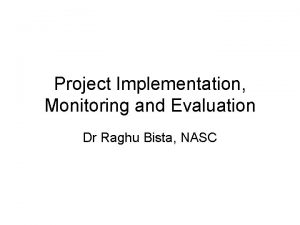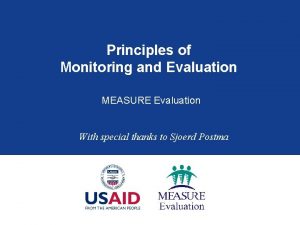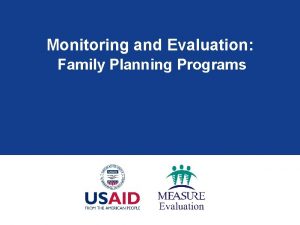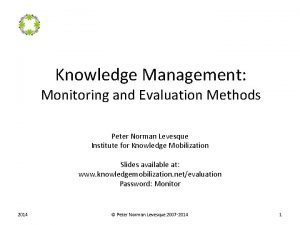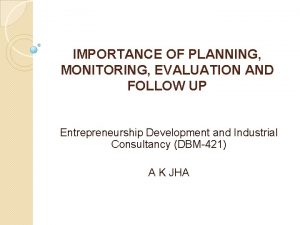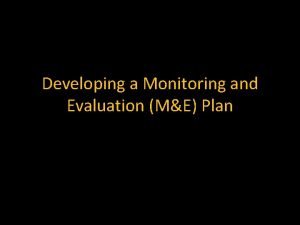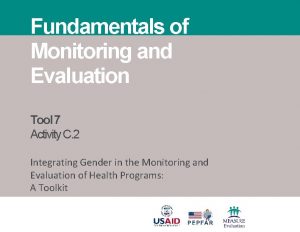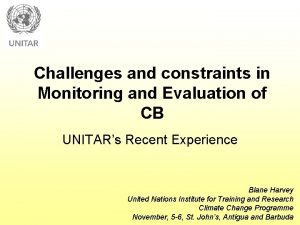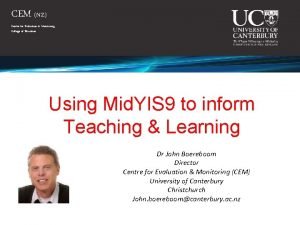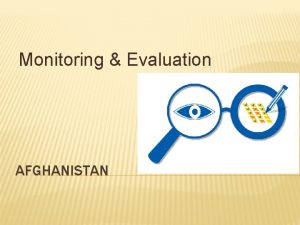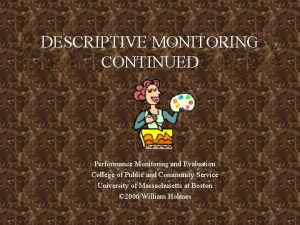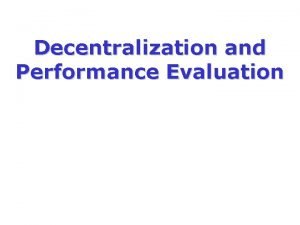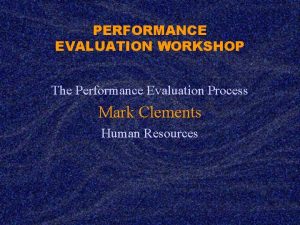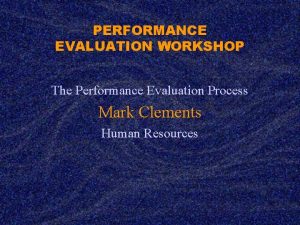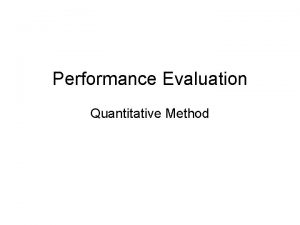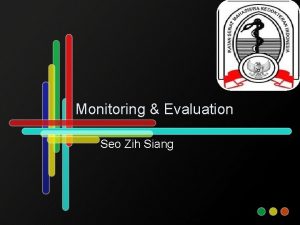CLASSIFICATION AND MONITORING Performance Monitoring and Evaluation College















- Slides: 15

CLASSIFICATION AND MONITORING Performance Monitoring and Evaluation College of Public and Community Service University of Massachusetts at Boston © 2006 William Holmes 1

ASSIGNMENT 3: REQUIREMENTS • Causal assumptions regarding people and services • Theoretical basis • Strengths and weaknesses of theoretical basis • Example of how changing causal assumption would change program • Pros and Cons of changing assumption 2

ASSIGNMENT 3 THEORETICFAL BASIS 1 • Utilitarianism • Economic Materialism (Capitalism and Marxism) • Socialization • Symbolic Interactionism 3

ASSIGNMENT 3 THEORETICFAL BASIS 2 • • Psychoanalytic Biosocial Cognitive Psychology Systems Theory 4

ASSIGNMENT 3 STRENGTHS & WEAKNESSES 1 • • Utilitarianism—emotions and role of values Materialism—wealth, altruism, and religion Socialization—learning and motivation Symbolic Interactionism—physical vs. social reality 5

ASSIGNMENT 3 STRENGTHS & WEAKNESSES 2 • Psychoanalytic—individualism and society • Biosocial—biology and free will • Cognitive Psychology—anticipation and spontaneity • Systems Theory—interconnected units 6

ASSIGNMENT 2 PRESENTATIONS • • • Identify self Identify program and goals Summarize descriptive procedures used Discuss strengths and weaknesses Propose some improvements 7

WE CLASSIFY IN MONITORING BECAUSE IT • • • Reveals Structure Reveals Process Promotes Effectiveness Promotes Efficiency Provides Meaningful Distinctions Aids Decisionmaking 8

LIMITATIONS OF CLASSIFYING • Meaning of categories may be unclear • Categories may be incomplete (not exhaustive) • Categories may overlap (not be exclusive) • Breaks between categories may be arbitrary • Differences may be continuous, rather than discrete • There may be sub-categories 9

ISSUES IN USING NATURAL CATEGORIES • Completeness—are some overlooked? • Exclusiveness—do some overlap? • Consistency—are they logically consistent? • Dimensionality—are they unidimensional or multidimensional? 10

USES OF CATEGORIES FOR ASSESSING MERIT • • • Clarification of criteria for merit Triage, referral, and diversion Conformance with standards Success recognition Failure assessment 11

USES OF CATEGORIES FOR IDENTIFYING BEST PRACTICES • Classifying as best practice • Forensic analysis of worst practices • Dissemination of successes • Discouraging for failures 12

USES OF CATEGORIES FOR OVERSIGHT AND COMPLIANCE • • Targeting prescribed categories Avoiding proscribed categories Simplified reporting Simplified evaluation 13

PROCEDURES FOR CREATING CATEGORIES 1 • • Inductive versus deductive procedures Expert Judgments Natural Categories Qualitative versus quantitative procedures 14

PROCEDURES FOR CREATING CATEGORIES 2 • Choice of qualitative procedures —observation, content analysis, a priori • Choice of quantitative procedures —cluster analysis, factor analysis • Choice of deductive taxonomies 15
 Pregnancy and infant cohort monitoring and evaluation
Pregnancy and infant cohort monitoring and evaluation Progress and performance measurement and evaluation
Progress and performance measurement and evaluation Evaluation in progress
Evaluation in progress Pme project management
Pme project management Comparison between monitoring and evaluation
Comparison between monitoring and evaluation What are the principles of monitoring and evaluation
What are the principles of monitoring and evaluation M&e dashboard
M&e dashboard Monitoring and evaluation of family planning programs
Monitoring and evaluation of family planning programs Knowledge management monitoring and evaluation
Knowledge management monitoring and evaluation Importance of planning, monitoring and evaluation
Importance of planning, monitoring and evaluation Monitoring and evaluation plan template
Monitoring and evaluation plan template Principles of monitoring and evaluation
Principles of monitoring and evaluation Basics of monitoring and evaluation
Basics of monitoring and evaluation Challenges in monitoring and evaluation
Challenges in monitoring and evaluation Centre for evaluation and monitoring
Centre for evaluation and monitoring Differences between monitoring and evaluation
Differences between monitoring and evaluation




